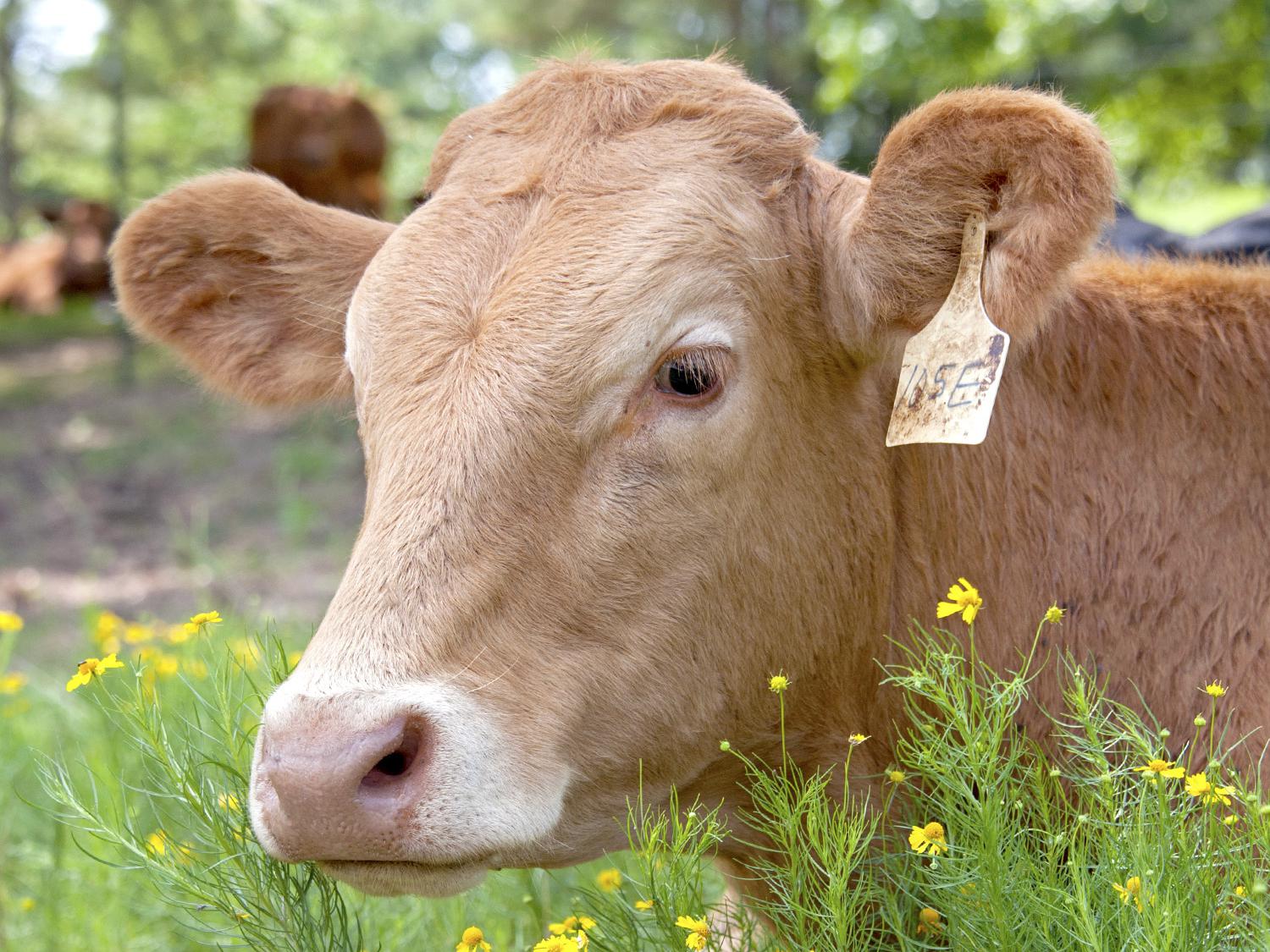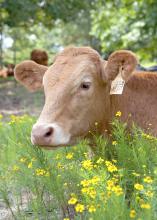Information Possibly Outdated
The information presented on this page was originally released on July 11, 2014. It may not be outdated, but please search our site for more current information. If you plan to quote or reference this information in a publication, please check with the Extension specialist or author before proceeding.
Record livestock prices create curious dilemma
MISSISSIPPI STATE -- Cattle and hog prices are soaring to record highs, causing producers to debate whether to sell their valuable animals or expand their herd sizes for the future.
“It’s hard not to sell when prices are this good and the pull of the feedlot is so strong,” said John Michael Riley, an agricultural economist with the Mississippi State University Extension Service.
As producers continue to reduce herd sizes nationally, prices should remain strong, but the result will be fewer animals available to sell in the future.
“In Mississippi, we are looking at lightweight calf prices approaching $3 per pound. Heavyweight feeder cattle are around $2 per pound,” Riley said. “Last year, the lighter calves were $1.50 per pound, and the heavier cattle were in the $1.25 per pound range.”
Riley said low prices occurred in 2009 when lightweight cattle were around $1 per pound and heavyweight were around 85-90 cents per pound. Prices started rising even before major cattle-producing states began to experience droughts about three years ago.
Current prices are largely supply driven, and very few cattle were available after the drought-inspired selloffs. Additionally, economists are describing a “robust demand” for meat at the nation’s grocery stores and restaurants, as well as strong exports overseas.
“All major protein sources, including chicken, are selling higher in recent months,” he said. “Eventually, the price of meat protein will become a factor for consumers, and the market could shift, but it won’t change directions quickly.”
Riley said consumer demand is a strong positive, but low feed prices are the icing on the cake.
“Both corn and soybean prices are down, and they are the two major feed inputs,” he said.
Brandi Karisch, an Extension beef specialist, said feed costs have a significant impact on producers’ profits.
“Corn prices have gone down compared to this time last year, so it’s more profitable to feed corn right now,” she said. “In the past, producers were actually losing money by feeding it to their cattle.”
Karisch said Mississippi has been fortunate not to have a major drought, but the state’s cattle numbers are still down.
“With prices so high, producers are not keeping many animals,” she said.
“There are two factors at play. It’s grilling season, so demand is very high, and there are not a lot of market-ready cattle,” she said. “Additionally, cattle eat less during the hot months, so they don’t put on the weight and finish out as well during the summer, which contributes to the shortage.”
Extension swine specialist Mark Crenshaw said the record hog prices are giving producers an opportunity to make up for past losses. In the late 1990s, hogs were selling for as little as 8-10 cents per pound. Cash hog prices now are around 90 cents per pound.
“Producers may be able to make up for some of the losses in recent years when feed costs and hog prices were so different,” he said. “Most producers will not be expanding because they are trying to recoup some of the past losses. The resources to expand are just not there yet.”
The biggest challenge for hog producers is the Porcine Epidemic Diarrhea virus, which has killed millions of piglets nationally in just over a year. First diagnosed in the United States in May 2013, the PED virus affects only swine, primarily those less than 3 weeks old. However, it is important to note that pork remains safe to eat.
“PED has contributed to the high prices, but the total pig numbers are down about 5 percent from the previous year, so other factors are at work to reduce hog numbers,” he said. “Without any major event to impact the global economy or fuel costs, hog prices should remain high in the next year.”






